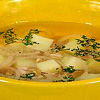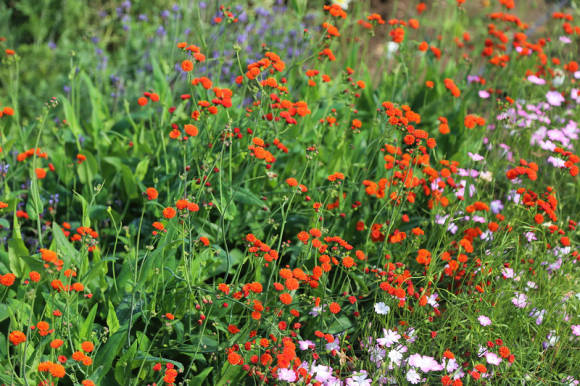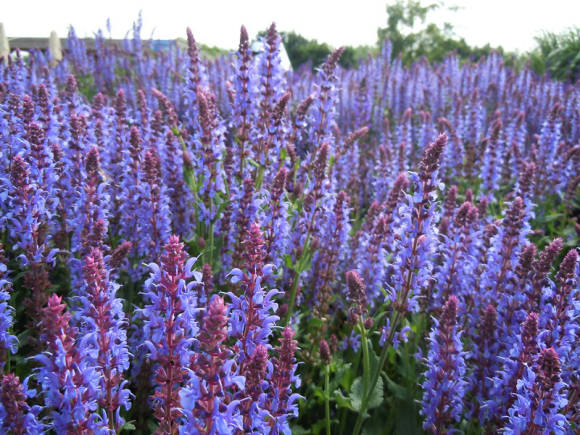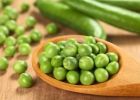
Pea culture appeared about 8,000 years ago in the region of the rich Crescent, at the same time that some cereals (wheat, barley) and other legumes (lentils, vetch) began to be grown. Pea seeds, which date back to between 7,500 and 5,000 BC, have been found in Neolithic excavations in Greece and Iraq, but it is not entirely clear whether the peas were harvested from nature or grown in the fields. Subsequently, the culture spread to the west (Europe) and east (India). Peas were found at excavations in Troy and Central Europe, which date back to 4000 BC, in Western Europe and India - to 2000 years. The remains of peas were found precisely in lake dwellings of the early Bronze Age in Switzerland and France (Lake Bourget).
Peas were known to the ancient Greeks and Romans. He is mentioned by Theophrastus in the "History of Plants" in the 3rd century BC, then by Columella and Pliny in "Natural History", written in the year 77 AD. According to Columelle, peas were planted like other legumes during the autumnal equinox, "when the soil is moist and light" (Columelle, De l'Agriculture Livre II, X)

In 800, Carl Magnus recommends peas in his work Capitulare de villis vel curtis imperii among important garden crops. Dry peas, which were easy to store in those conditions, constituted one of the main food resources of the poor during the Middle Ages. It was often cooked with lard. And the French peasants had a saying with something like this: "He who has peas and a grain of barley, lard and wine to moisten his throat, Who has five sous and owes nothing, Can say that he is fine."
Viandier, a book of kitchen recipes by Guillaume Tyrel called Taillevent, in the 13th century had a recipe for "young peas" cooked in a pot. This is the first mention of green peas in history.
The appearance of peas in the New World is associated with the name of J. Columbus, who during his first voyage brought seeds to Santo Domingo.
The consumption of whole beans has been mentioned since the 16th century in the Netherlands and France. The use of whole beans is mentioned by Jean Ruelle in his Natura Stirpium libri tres, published in 1536.

The consumption of green peas came into vogue in France during the time of the Sun King - Louis XIV. This is what, on January 18, 1660, the chef of the Countess de Soissons, Monsieur Audiguier, presented to the court of King Louis XIV the green peas brought from Italy and cooked. It was prepared in the French manner for the king, queen and cardinal and it was the birth of a fashion that made a splash in the world, the immature product fell in love with. The French nobility was so addicted to this product that they often paid for this addiction with an upset stomach.
In the 18th century, the Irish poet Oliver Goldsmith, who visited France many times and tasted green pea dishes "in the French manner", accused him of poisonousness in his letters.
The third President of the United States, Thomas Jefferson, became famous for his love for science in general and for agronomy in particular. He became interested not only in winemaking, but also in green peas - he collected a large collection of samples and tried to select the most early ripening varieties.
During the 19th century, the popularity of green peas in France peaked and the number of varieties increased enormously. Thus, Denaiffe breeders and sons, in their work on garden peas, published in 1906, describe about 250 varieties.
By the end of the 19th century, the production of mainly shell peas, which is well stored, is developing. But since the beginning of the 20th century, thanks to the development of technologies in the food industry, brain peas have been produced in large quantities in the developed countries of the old and new world. It can be preserved and frozen; in addition, the possibility of mechanizing its cultivation and harvesting appears.
In 1920, American inventor Clarence Beardsay, founder of the General Seafood Society, produces frozen green peas for the first time.
There's even a pea monument, a green giant statue in Blue Earth, Minnesota.
In 1926, the American Minnesota Valley Canning Company, which would later be renamed Green Giant, created the Géant Vert brand to produce a product with the motto "Better Than Just Green Peas." This brand exists to this day. In the same year, in France, the Bonduelle society, which is now, according to advertising, the first number in Europe for freezing and canning vegetables, produced the first cans of canned peas at the Bonduelle de Renescure plant.

Peas are now an important food crop in the world. However, with over 18 million tonnes harvested in 2007, peas are only the fourth legume in the world, far behind soybeans (216 million tonnes), peanuts (35 million tonnes) and beans (28 million tonnes). ). 48% is used for food, 35% - for livestock feed.
It is interesting that the largest areas are occupied by peas in Canada (1455 million / ha), but the highest yield is in France (more than 20 centners / ha). Canada, with 3 million tonnes of mostly grain peas, accounts for 30% of world production, far ahead of the rest. Pea production is concentrated in the western provinces and is exclusively for export.
Most of the producing countries grow green or yellow type peas. Australia and India produce mostly brown peas.
The two main green pea producers, China and India, supply about 70% of the world's total.
The European Union, with its 1.53 million tonnes, is actually the world's second largest producer. France produces 643,000 tonnes of dry peas, which is 42% of the total in the European Union, but a large share is also represented by green peas.
At present, for example, in France, consumption is 2.2 kg / person per year, and it is mainly green peas, and in Ethiopia - 6-7 kg, but these are mainly split peas.
Peas as such are used in a wide variety of forms. First of all, these are green peas, beloved all over the world, that is, unripe seeds that are frozen and canned. Sometimes the whole fruit is used, but on condition that the shutters do not contain a hard parchment layer. Young shoots are used as a vegetable in Asian countries, and sprouts have already appeared in our country, having migrated from Chinese cuisine. Dry peas are used to make soups.
But in addition, part of the peas is used for processing - for the production of proteins and feed for livestock and poultry, as well as in some cases are raw materials for the production of proteins and starch. And the parts of plants remaining after peeling are good feed for livestock. Continued in the article Pea culinary traditions.









